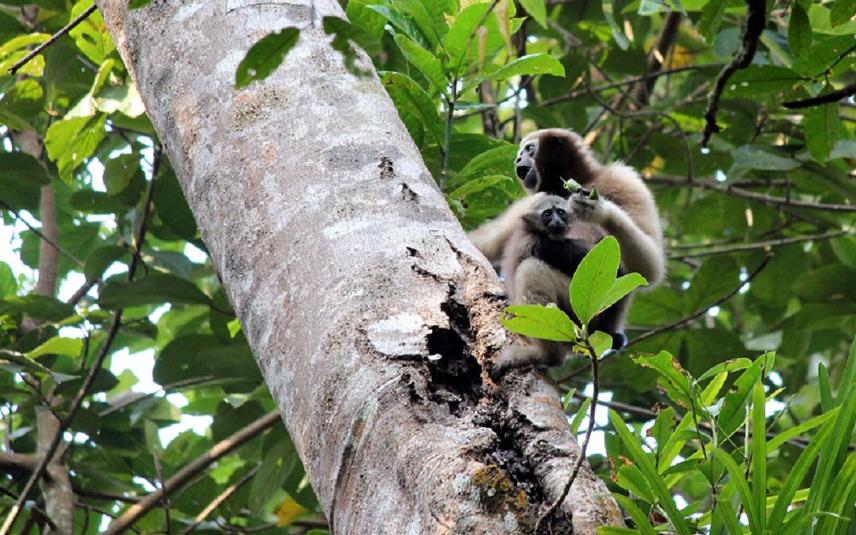Sufia Akter Neha
Hoolock Gibbon is a globally endangered while critically endangered primate species in Bangladesh. The population of gibbon has greatly reduced around 90% during the last two decades. Safeguarding a future for the gibbon is the most important priorities in primate conservation. Here I will consider how gibbons in Bangladesh are influenced by inter-specific competition with other frugivorous vertebrates (especially sympatric primates and birds) which will be helpful to develop conservation action plan to save gibbon as well as other frugivorous vertebrates.
This study aims
1. to gather baseline information on the major competitors of gibbons;
2. to enumerate the niche overlap between gibbon and other frugivorous vertebrates; and
3. to initiate a long term, sustainable action plan for the survival of gibbons in Bangladesh.

Hoolock gibbon female with infant.
Hoolock gibbon is an acrobatic, brachiating, bipedal primates that we traditionally call “lesser apes”. It is the only apes found in Bangladesh, and indeed they are critically endangered. In fact, the hoolock gibbon was ranked as one of the 25 most endangered primates in the world. In Bangladesh, fewer than 250 individuals of the species remain. The forest complexes in this area that are home to the hoolock gibbon continue to face pressure from severe habitat loss, human encroachment, fragmentation making the species extremely vulnerable. Excellent field studies have been done on gibbons in Bangladesh. Knowledge about niche differentiation between hoolock gibbon and other frugivorous vertebrates is still unknown. For this reason, I found interest to work on this incredible lesser ape and to develop an effective conservation plan for this species in Bangladesh.
The key activities of this project will include building up enthusiastic young researcher through heuristic learning; developing communities understandings through conservation education and awareness creation. Workshops and group discussions will be organized on time to time and different documentaries will be placed in honour of the locals, school children, forest staffs and other stakeholders to enlighten them about the habitats, threats and importance of gibbon in ecosystem. A semi-structured questionnaire will be developed to elicit appropriate responses from the respondents. Moreover, education and outreach materials will be disseminated to the local communities. The project will be intended to spark the interest of the participants and to inspire others to get involved in gibbon conservation which prevent the species from the verge of extinction. Finally, the baseline data will be useful for the government of Bangladesh to implement any conservation program on gibbon.
As gibbons are the prominent features of the disturbed forest in this region, hence they can be regarded as a flagship species. Gibbon that eats a diet consists of a high proportion of fruits play an important role in the forest as seed dispersers. This means that their presence is crucial to the stability and forest regeneration.